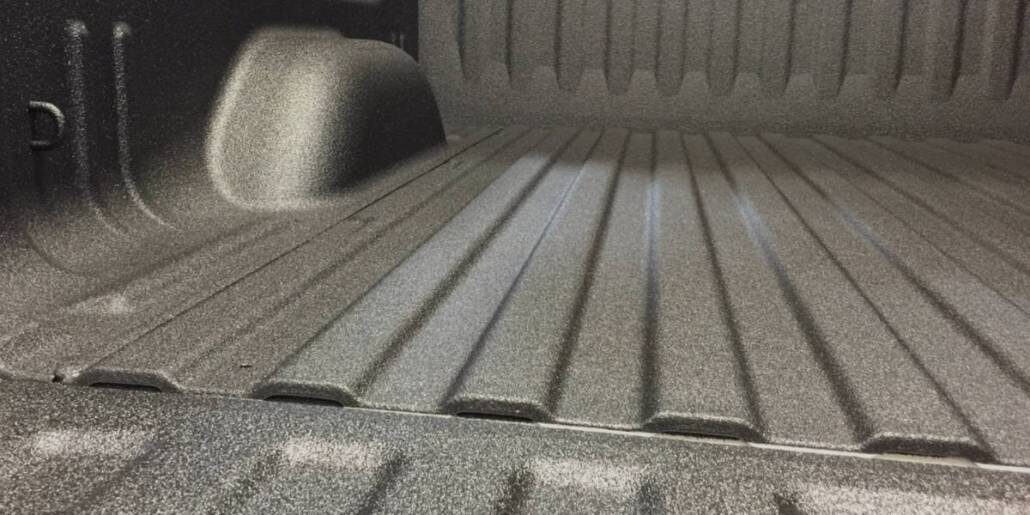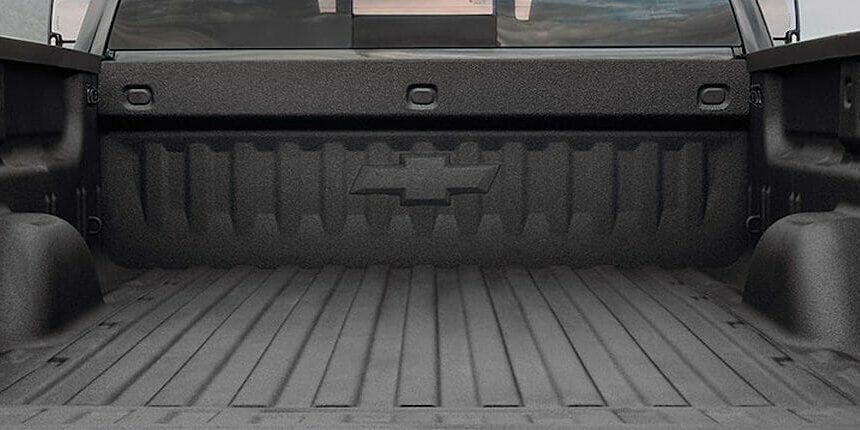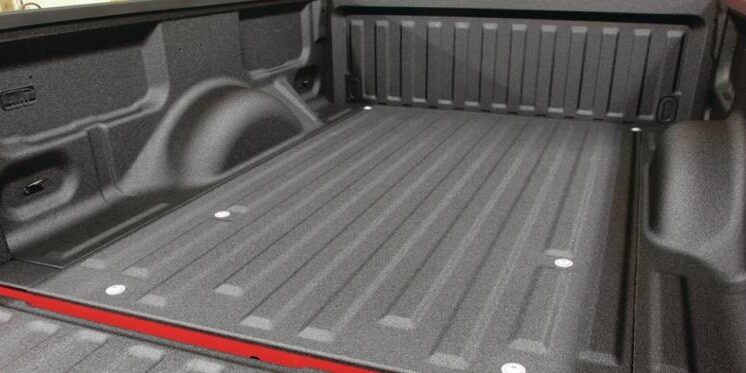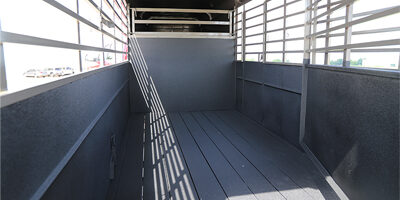SPRAY-ON BEDLINERS
Protect more than just your truck bed!
- Step Rails
- Bumpers
- Rocker Panels
- Fender Flares
- Entire Vehicle
- Hunting & Off Road Vehicles
- Trailers
- RVs
- Flat Bottom Boats
Polyurea Benefits
- No VOC's and Little to No Odor
- Some Systems are USDA and Potable Approved
- Weather Tolerant: Cures at -25oF to >300oF even in High Humidity
- Excellent Resistance to Thermal Shock
- Flexible: Bridges Cracks
- Waterproof, Seamless and Resilient
- Unlimited Mil Thickness in One Application
- Spray, Hand Mix and Caulk Grade Materials
- Excellent Bond Strengths to Properly Prepared Substrates
- Resistant to Various Solvents, Caustics and Mild Acids
- Low Permeability, Excellent Sustainability

Polyurea
Polyurea is a coating, lining and joint sealant technology. It is being used successfully for many different applications today. Polyurea coatings and linings are more commonly applied over concrete and steel for corrosion protection and abrasion resistance. They also have tremendous advantages over conventional materials for joint fill and caulk applications due to their fast set nature, high elongation and durability/abrasion characteristics. Polyurea can be molded and shaped by spraying it into molds. Similarly, polyurea is also used as hard coat protective shell over expanded polystyrene (EPS) for architectural molded fascia applications. The markets and applications are endless and on the rise. Polyurea by name is not a specific coating system or a specification; it is a description of a polymer technology. A great technology that boasts many different formulations and physical property ranges. There are pure polyureas and hybrid polyurea systems, each possessing their own characteristics, advantages and disadvantages. Users and specifiers must take into consideration that the proper combination of formulation, spray equipment, surface preparation, primers, training and application procedures is what leads to polyurea success. Improper training, under-rated equipment and lack of material/substrate compatibilities and preparation is what leads to polyurea failure, and for that matter, failure of any protective coating and lining system. Always follow the system manufacturer's written guidelines for the best results.
Testimonials
Get In Touch
If you have any questions or concerns about a project, we'd love to hear from you!





